The History of Lamborghini Is Filled With More Twists and Turns Than a Race Through the Italian Alps
It all started with a beef between Ferruccio Lamborghini and Enzo Ferrari.
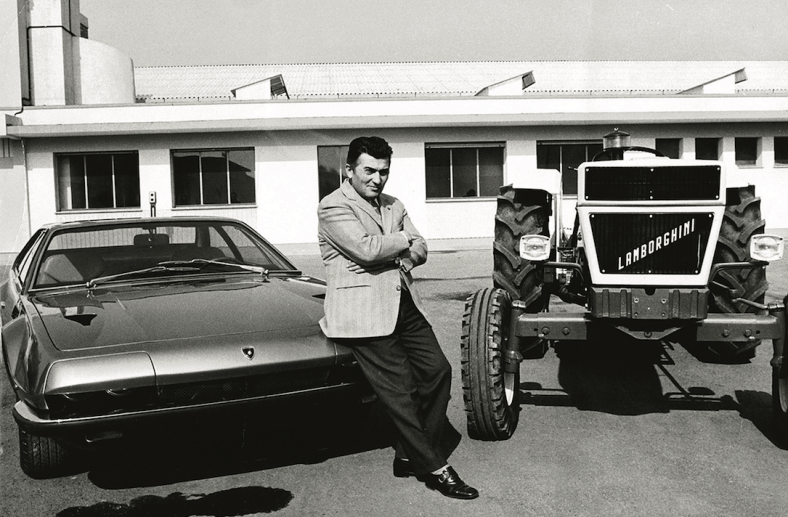
Like superheroes, every great company has a founding myth. Automobili Lamborghini’s origin story centers around a clash of midcentury Italian industrial titans: Ferruccio Lamborghini and Enzo Ferrari. Lamborghini was a successful entrepreneur who, legend has it, decided to reward himself for creating his eponymous tractor-manufacturing company with the purchase of a Ferrari sports car. But the clutch of his new possession proved troublesome, and when Lamborghini had his own company’s engineers troubleshoot the problem, he called for a meeting with Ferrari to offer the technical solution.
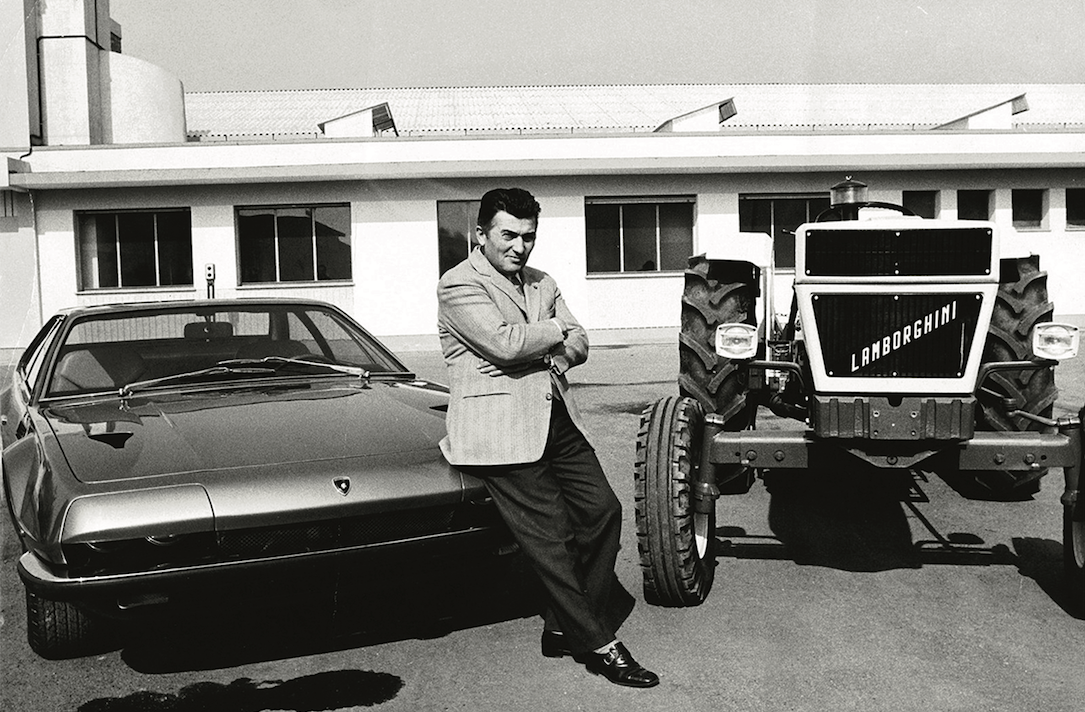
The imperious Enzo Ferrari was outraged that a tractor maker would deign to tell him how to design his sports cars, and he sent Lamborghini on his way, telling him to focus on what he knew best. Instead, Lamborghini returned to Sant’Agata, outside Bologna, resolved to build sports cars that would show Ferrari how it should be done. He warmed up with a couple of conventional 1960s-style models, starting with the 350GT in 1964.
But Lamborghini the company became the Lamborghini we know today—an iconoclastic builder of futuristic fantasy cars—with the introduction of the Miura at the Geneva International Motor Show in 1966. The Miura is rightly called the world’s first supercar because it established the mold for those that followed by locating the vehicle’s sonorous 350-horsepower 4.0-liter V-12 behind the cockpit rather than ahead of the windshield. Today, the Miura lives on as the Aventador— Lamborghini’s flagship mid-engine V-12 supercar. The lineage from the Miura to its successor models, the Countach, Diablo, Murciélago, and Aventador, is unbroken.
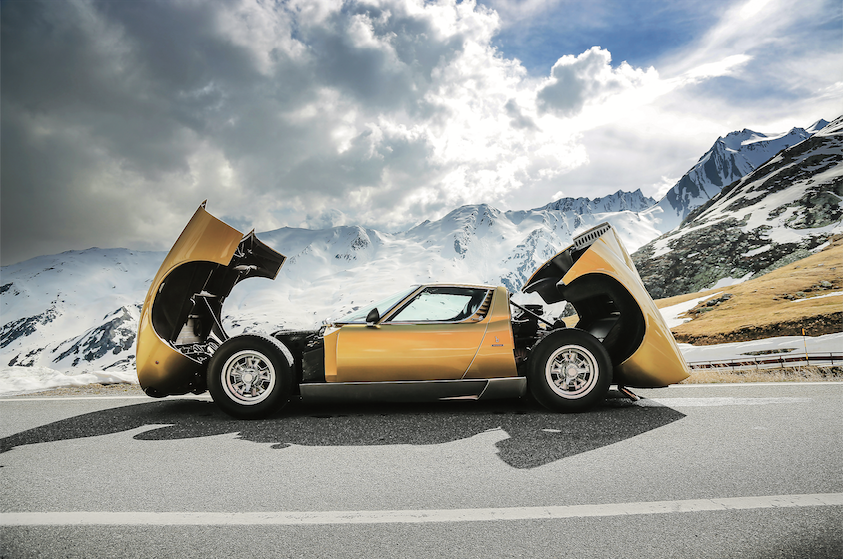
The Miura’s midengine configuration provided superior balance and followed the conversion of Formula 1 racers from a front-engine to a mid-engine layout. The original production Miura from 1969 was good for a top speed worthy of its groundbreaking looks: 177 mph. The 1971 Miura Superveloce gained 15 horsepower and nine mph, for a new top speed of 186 mph.
This is the car that most fans identify today as the seminal Lamborghini, and chief operating officer of Automobili Lamborghini America Alessandro Farmeschi has a gorgeous poster-size photo of a Miura hanging on the wall outside his office. “It was a visionary product for the time,” he says. “Even today, if you put it alongside a modern car, you don’t discern a difference in terms of style.”
Lamborghini’s challenge then, in the early 1970s, was to avoid being a one-hit wonder. Indeed, the Miura’s sequel made an even bigger splash. The Countach even took its very name from a Northern Italian colloquial exclamation of astonishment to the effect of “Wow!”
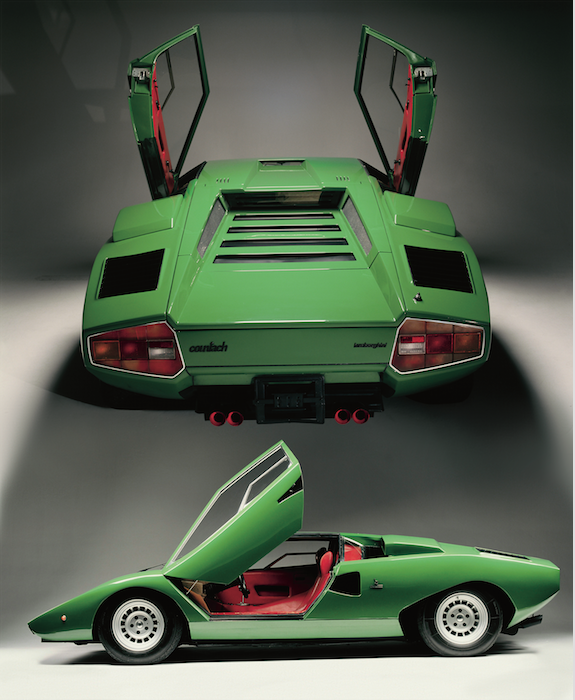
It’s no wonder. The wedgy lines of Lamborghini’s new car amazed 1973 Geneva International Motor Show attendees with its brashly space-age styling. Initially, the Countach carried over the Miura’s 4.0- liter V-12, but Lamborghini later upgraded the car to a 5.2-liter version of the engine that reached 455 horsepower in the 25th-anniversary edition of 1988.
“The one that set the design language of modern cars is the Countach,” Farmeschi says. “I really had a picture of it on the wall of my bedroom.”
Indeed, most adolescent boys had a crimson Countach decorating their rooms, abetted by stereo-maker Alpine, which thoughtfully produced posters of the car bearing the slogan “Body by Lamborghini. High fidelity by Alpine.”
It is through such avenues that products graduate from mere cars to cultural icons, and the Countach is one of the most powerful icons of the 1980s.
As Lamborghini struggled with finances, the company conceived its last V-12 halo model as a stand-alone company. The Murciélago looked and sounded the part, but like so many Lamborghinis of the 1990s, it fell short on quality and reliability.
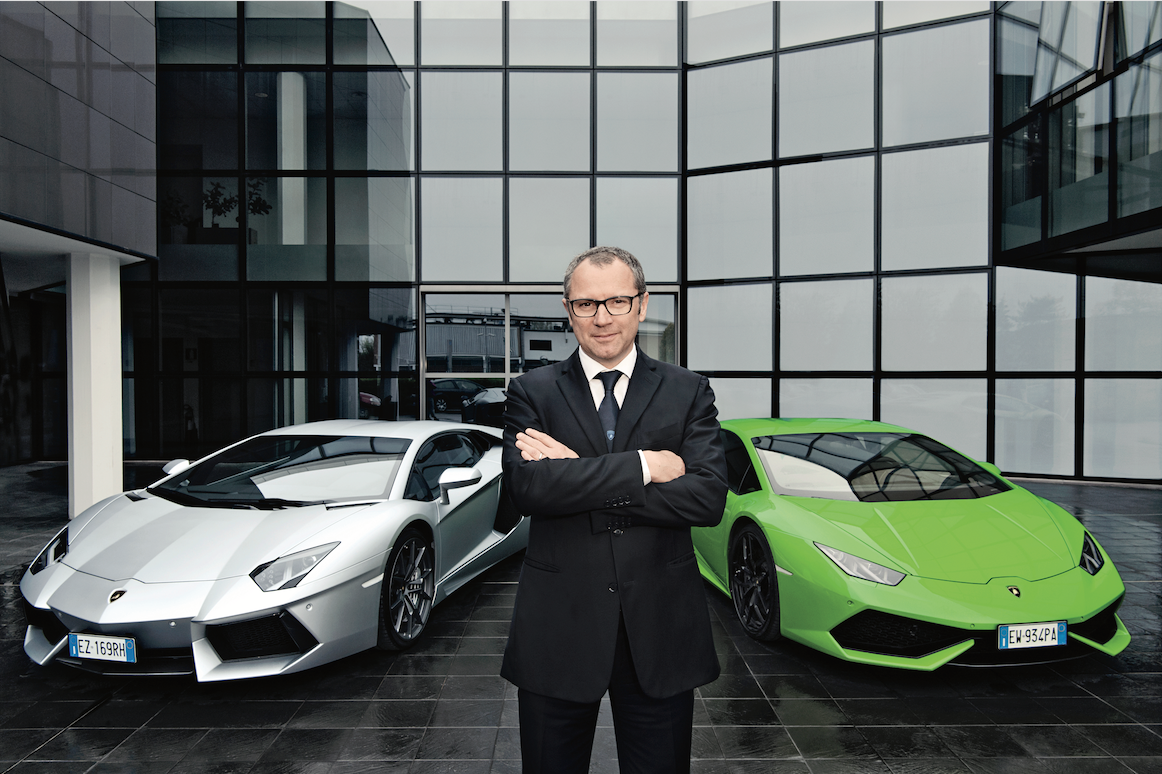
One of the first things to happen when the Volkswagen Group bought Lamborghini was the introduction of a new V-10 model line positioned beneath the Murciélago. At about half the price of a V-12 Lamborghini, the V-10 Gallardo became the best-selling car in company history, solidifying Lamborghini’s finances and repairing its reputation for spotty quality.
(The Huracán now fills that role in Lamborghini’s product line.) Today, a picture of the Lamborghini Centenario is on the cover of the Xbox One game Forza Motorsport 6, where it can burn itself into the consciousness of adolescents the way the Countach did, looking down from bedroom walls on that Alpine poster.
Lamborghini is now a corporate subsidiary within the sprawling Volkswagen Group. But the company remains spiritually unchanged from its foundation, Farmeschi insists. “The history, the heritage is passed inside the company,” says Farmeschi. The 2017 Aventador Superveloce rolls out of the very factory Ferruccio Lamborghini built in a field and carries on the V-12 lineage of the Miura and the Countach.
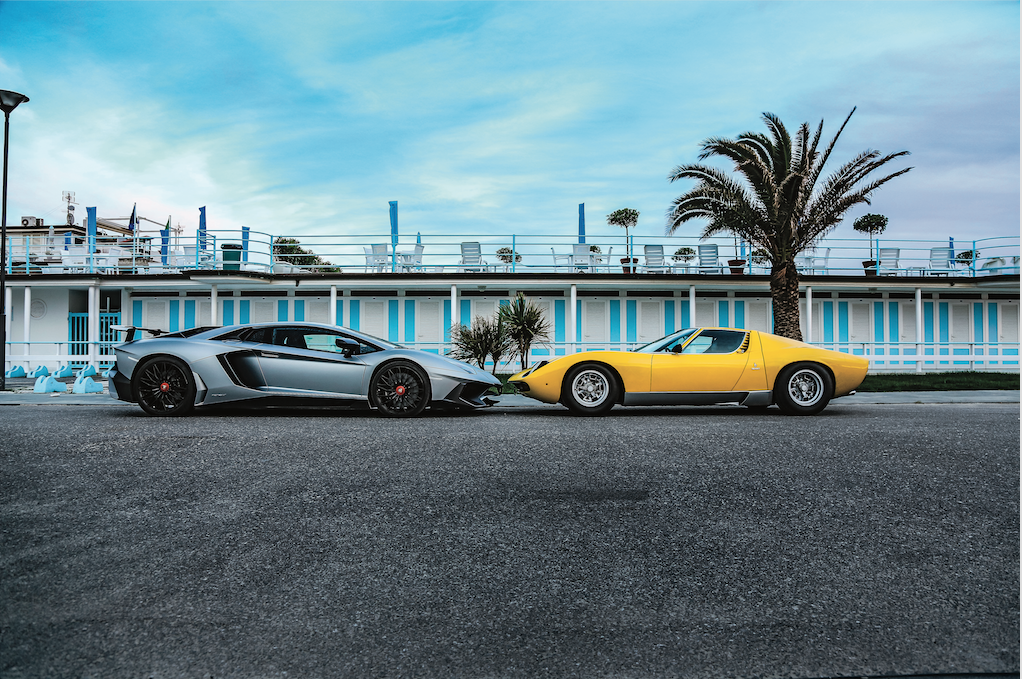
In celebration of the company’s 50th anniversary, Lamborghini unveiled the one-of-a-kind Egoista in 2013. The stunning single-seat concept looks equal parts robin’s-egg-blue Batmobile and F-117 stealth fighter, with its angular flip-up canopy.
To placate those customers disappointed that they couldn’t own an Egoista, Lamborghini also turned out the stunning Veneno Coupe and Veneno Roadster, cars whose designs were inspired by the sports car prototypes that race in the 24 Hours of LeMans. These were built in a run of only five coupes and nine roadsters, at an estimated $3.5 million each.
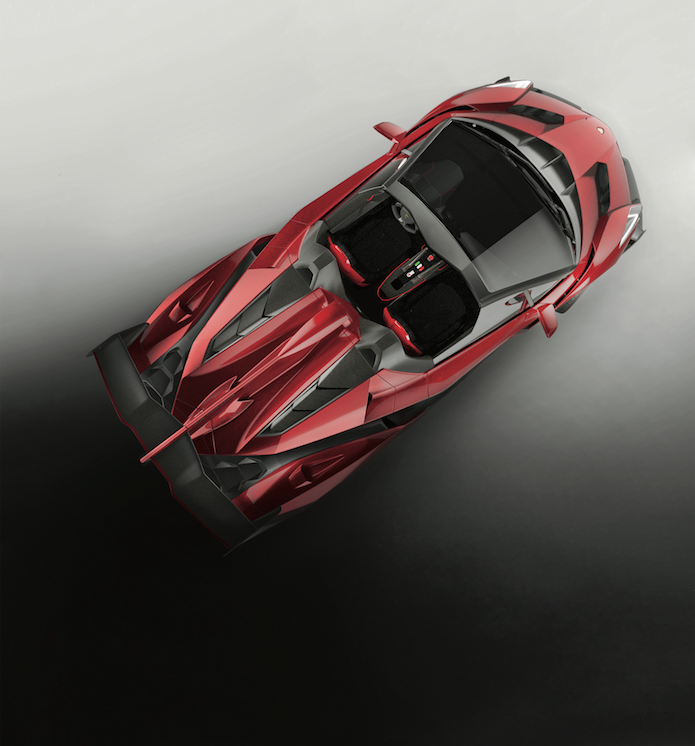
While Egoista was purely a design statement and the Veneno was practically unattainable, the Aventador is Lamborghini’s contemporary flagship and the car that Farmeschi declares as his favorite. “The Aventador, for me, is the car. The ‘wow’ effect of this car is unbelievable.”
Indeed, it is. That’s thanks to the Aventador’s half-million-dollar price tag, carbon-fiber construction, racecar-style pushrod suspension with magnetically adjustable shock absorbers, dramatic flip-up scissor doors, and shrieking 740-horsepower 6.5-liter V-12 engine.
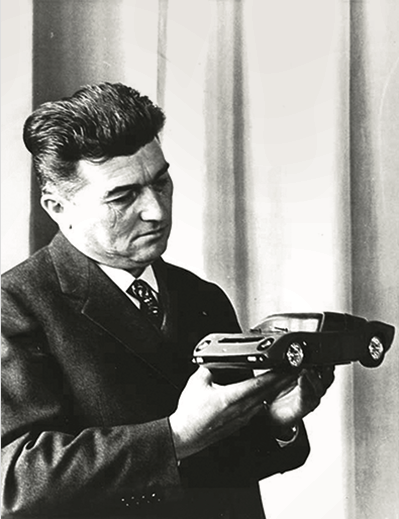
Plus, as ever, menacing knife-edge looks that leave the Aventador’s identity as a Lamborghini unmistakable. This rocket ship turns heads as quickly as it accelerates, blasting to 60 mph in just 2.9 seconds and reaching a terminal velocity topping 217 mph. And there’s even a roadster version with two removable geometrically shaped roof panels that let in sunlight, fresh air, and admiring stares.
In recognition of the 100th anniversary of Ferruccio Lamborghini’s birth, the company issued a limited-edition model based on the Aventador’s chassis, called the Centenario (pronounced “Chen-ten-AH-ri- o” with an Italian-accented, rolled r). Lamborghini is building only 40 of the half-coupe, half-roadster Centenarios, with a starting price of $1.85 million. The striking, crisp-edged vehicle is a chiseled reminder of Lamborghini’s position in our culture as an unabashed style pioneer, even when designs like the Centenario can have as many detractors as fans.
At high speeds, the Centenario has a stabilizing rear wing that extends out behind it like a superhero’s cape….which is fitting indeed.
